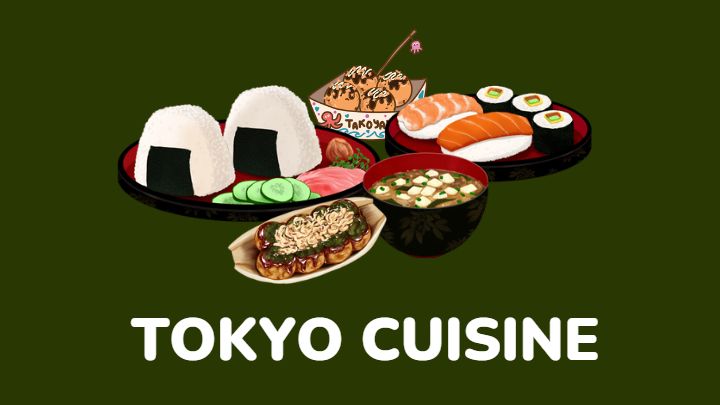Beyond the automotive and anime characters, the Japanese have successfully influenced the culture of Western countries. Tokyo has invaded the cuisine of Western countries like the Americas.
Tokyo cuisine is quite large, and it’s not so surprising to see Japanese restaurants in America.
If you plan to try out Tokyo cuisine, why not find out what else is there to eat other than sushi? If you want to know why Tokyo is lauded as one of the largest food cities in the world, you need to read this article.
About Tokyo cuisine
Tokyo cuisine is one of the largest cuisines in the world. It features both local and regional dishes, and some of these local dishes have been certified as the standard for those recipes. Tokyo cuisine generally encompasses foods eaten in Japan.
Furthermore, Tokyo was formerly known as Edo, named after the Edo River and Edo Era (1603-1868 CE) during which it became the capital city of Japan. It was during this era that the people discovered meals like sushi, tempura, and soba.
Some people refer to Japan as a food-obsessed nation. And, they do well to make good food available to all who would give it a try.
In addition, some daily staples in Tokyo cuisine are rice, noodles, seafood, seaweed, fish, soy-based foods, fruits, and vegetables.
What makes Tokyo cuisine different?
Tokyo cuisine is known for its cooking expertise.
It is said that it is not common to see badly prepared Japanese food. The taste of the food may not suit your preferences or palate. However, the chefs prepare the meals – local and regional – with the utmost caution and skill.
1. The ingredients in Tokyo cuisine
A typical family dinner in a Japanese home features rice, miso soup, salad, pickles, and some other side dishes made with vegetables. It is also very typical to find seafood like sushi, either grilled or raw, in the average Japanese kitchen.
Tokyo cuisine uses more fresh ingredients than processed ingredients. Also, in recent times, Japanese meals have seen more beef.
Also, Tokyo cuisines and water are quite the pair. They also use specialized knives for their numerous cutting.
Traditional Japanese meals follow the principle of “one food, three vegetables,” which makes their meals highly nutritious and gives a very natural flavor.
2. Method of food preparation in Tokyo cuisine
Japanese meals are carefully prepared. One of the many things the chefs keep in mind is timing. This ensures that they cook the meals perfectly.
Tokyo cuisine is upheld by some principles and they are:
The five cooking methods (Goho)
Tokyo cuisine is upheld by a principle of five cooking methods. They include raw (nama), simmering (niru), steaming (musu), frying (ageru), and grilling (yaku).
- The nama preparation method is the most fundamental and easiest. It uses a set of specialized knives to cut raw ingredients into bits.
- In the Niru preparation method, ingredients simmer in water or a broth until they are tender and flavorful.
- Musu involves steaming ingredients in a covered pot. This method is used to cook main dishes and side dishes.
- Yaku cooks ingredients over an open flame.
- The last method of food preparation in Tokyo cuisine is ageru, the deep-frying method. It uses oil and fat to cook ingredients at very high temperatures. This is so that the food cooks quickly and doesn’t lose any of its flavors.
The five flavors (Gomi)
Another principle that Tokyo cuisine works with is the principle of five flavors. It states that a Japanese meal should have a balance of sweet, bitter, sour, salty, and savory.
The five colors (Goshiki)
The Japanese believe that the more colorful your meal, the more nutritious it’ll be. Therefore, the healthier you’ll be.
These colors are white, green, yellow, red, and black. An example is a plate of white rice, black sesame seeds, vegetables, tofu, and grilled fish.
The five senses (Gokan)
A popular Japanese saying, “we eat with our eyes,” truly validates gokan. The Japanese believe that the senses of sight, smell, hearing, touch, and taste help access the deliciousness of a meal.
The five reflections (Gokan no mon)
The five reflections that uphold Tokyo cuisine are:
- Gratitude for the source and preparation of the food
- Your worthiness of the food presented
- A peaceful state of mind as you eat
- The meal should nourish your stomach and soul
- Your meal should enlighten you
3. Food presentation in Tokyo cuisine
Unlike Western cuisines, Tokyo cuisine rather finds it taboo to serve meals of different flavors in one bowl or plate. Each meal gets its bowl or plate.
In addition, at a Japanese table, you don’t serve the main dish atop the rice. They say it soils the rice.
Also, the Japanese serve their soups in bowls. Instead of eating with a spoon, you take the bowl close to your mouth and sip the soup.
What are popular meals in Tokyo cuisine?
Here are some of the first meals you’re likely to see in a restaurant that serves Tokyo cuisine. They are also the first meals to try.
1. Sushi
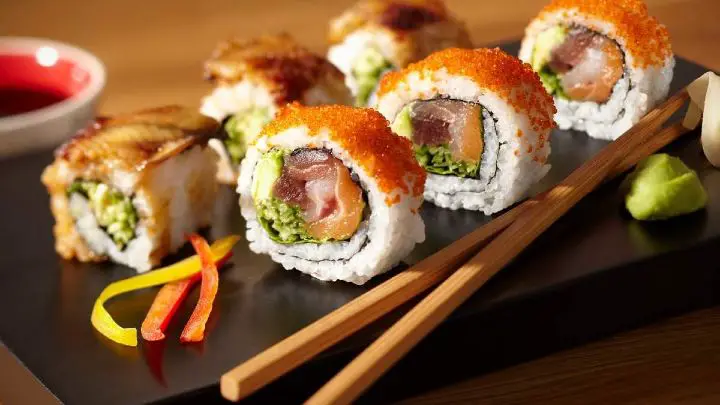
Sushi is probably the first food that comes to mind when you think of Japanese foods. It is a roll of fish (cooked or raw), rice flavored with vinegar, and seaweed or other vegetables.
You can eat sushi as a main course with sides and condiments or as a side by itself. Also, you should know that sushi was once Japanese street food. Today, it is an exotic meal at expensive restaurants.
2. Tendon
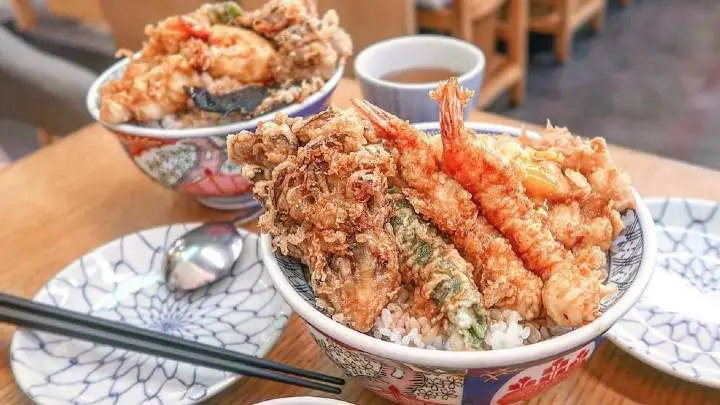
Tendon or tempura donburi is a bowl of tempura white rice. It contains deep-fried assorted tempura and vegetables atop a bowl of cooked rice. Tendon is a highly satisfying meal for the belly and palate.
3. Ramen
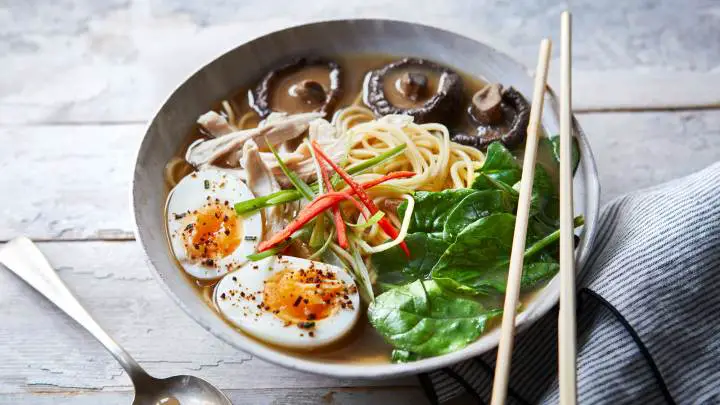
Ramen is an international meal, but when it comes to Japanese ramen, there is a difference.
In Tokyo cuisines, there are varieties of ramen recipes. The broth can have either chicken, beef, fish, or pork as its base. It is also flavored with soy sauce or miso.
4. Tempura
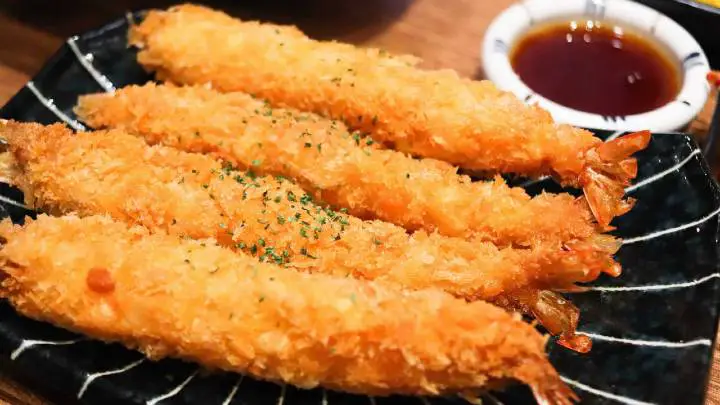
Tempura is a dish of assorted seafood, meat like chicken, and vegetables in a batter. It is deep-fried in oil until it is crunchy.
This dish is commonly served with a dipping sauce called tentsuyu. Also, you may choose to eat tempura as it is to enjoy the crunchiness.
5. Sashimi
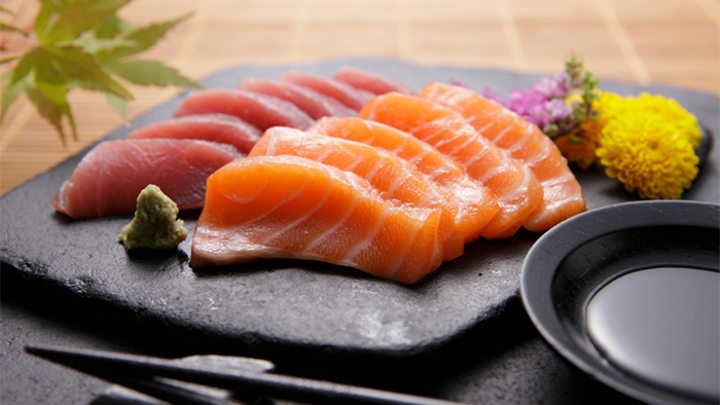
When you locate a Tokyo cuisine, you should give sashimi a try.
Sashimi is sushi without vinegared rice. Raw fish is cut into slices that are easy to eat. Additionally, just like sushi, you can have sashimi with soy sauce or wasabi.
6. Soba
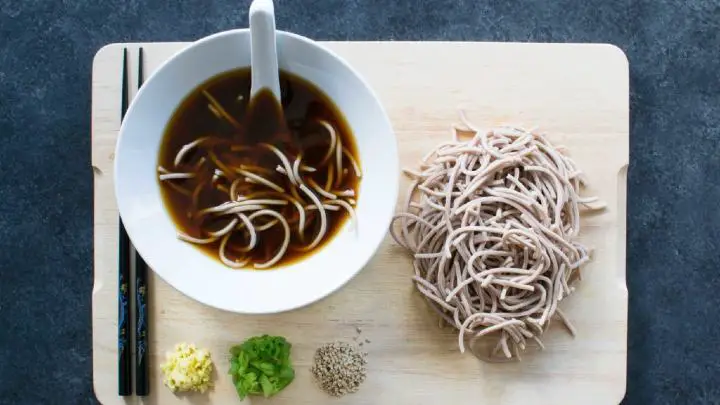
Soba noodles are made from buckwheat flour. This dish consists of boiled noodles that you can enjoy with a bowl of soup.
One unique thing about soba is that you can eat it with cold or hot soup and still find it palatable.
7. Miso soup
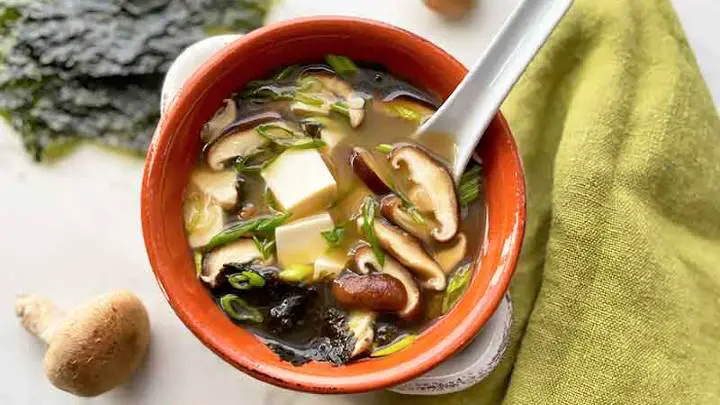
Miso soup is a traditional dish in Tokyo cuisine. This hearty broth is made with fermented miso as the base alongside seaweeds, tofu, potatoes, shrimp, onions, vegetables, or crab.
The soup is a popular meal in most Japanese restaurants. You can enjoy it at casual diners or high-class restaurants.
8. Curry rice
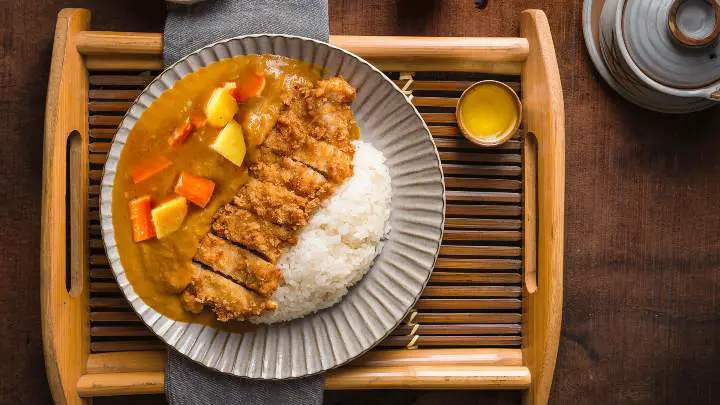
Kare raisu, curry rice, is a Japanese dish made by melting solidified curry roux into curry sauce.
The sauce is also garnished with potatoes, onions, carrots, and meat (pork or beef). Japanese curry with cooked rice is a popular main dish in Tokyo cuisine.
In addition, you can use the curry roux to make quick and delicious curry meals at home. But, if you find yourself in Tokyo cuisine, make sure to try some.
9. Wagashi
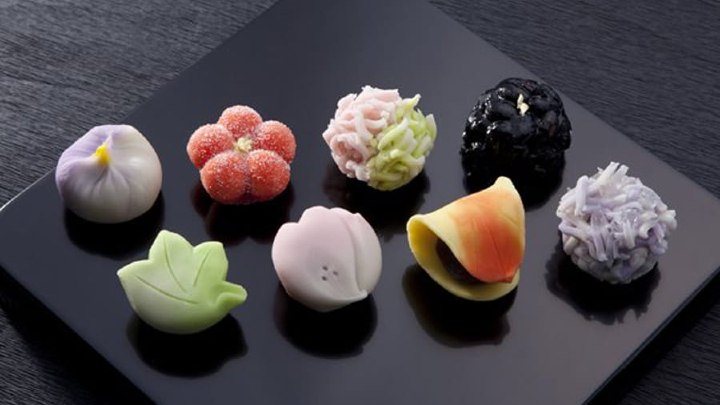
Wagashi are Japanese confections. These sweets usually come after a gratifying meal. They are made with mochi rice cakes, chestnuts, sugar, a thickener like agar, and anko paste.
It is also a common confectionery at matcha tea ceremonies. Some wagashi are dango, yokan, dorayaki, and daifuku.
10. Unagi
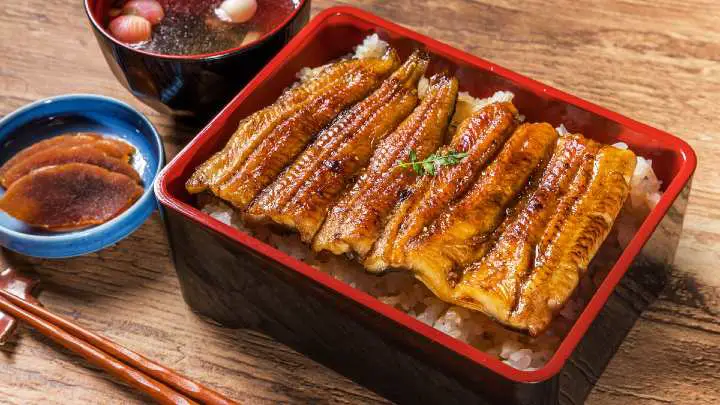
Unagi is a dish of grilled eel that is flavored with soy sauce, sugar, mirin, and sake. You can have the grilled eel on skewers or serve it on rice.
But the meal is quite expensive and is more common in high-end Japanese restaurants. However, some casual and cheap restaurants serve it in priced portions.
11. Onigiri
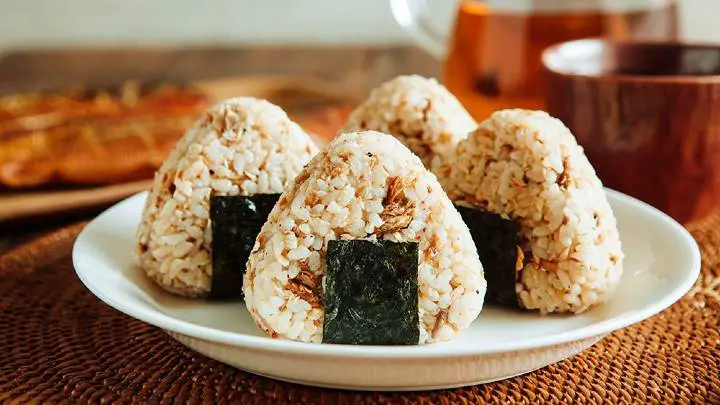
Onigiri is a Japanese rice ball served in Tokyo cuisine. The rice balls are wrapped with seaweed and may contain vegetables, meat, or fish as fillings.
Some people would rather just have the rice flavored with spices. If you know how to, you can indulge yourself at home by making and eating onigiri at home.
How can you find Tokyo cuisine near you?
Trust Google to help you get a list of restaurants that serve Tokyo cuisine.
Take note of their address, opening and closing hours, and what they propose to serve.
Furthermore, you can visit their websites for more information. Chinatowns and Koreatown are also great places to find Tokyo cuisine.
You can also visit grocery stores or supermarkets that sell Japanese meals to give your taste buds something to relish.
FAQs
What is Tokyo’s national dish?
The national dish in Tokyo is curry rice.
Based on family and individual preferences, you may eat curry rice as it is or serve it over cooked rice. You can also use any meat as the base of your broth.
Does Tokyo cuisine use meat?
Meats weren’t much of a meal in Tokyo until the Meiji era (1868-1912). Today, meat – pork, beef, or chicken- is as common as seafood in any Japanese restaurant. Pork is the most popular type of meat served in Tokyo cuisines.
How many times do the Japanese eat in a day?
A majority of Japanese eat three times a day. Also, you’ll find that most of them take family dinners very important.
Conclusion
Tokyo is one of the world’s cities with exotic dining. Tokyo cuisines give you an experience of eating in Japan from anywhere in the world.
They feature both local and regional cuisines that range from cheaply made meals to high-end dishes.
With the list of popular foods in Tokyo cuisine, I hope you have an idea of what to order when you visit Tokyo cuisine in America or when you find yourself in Japan.
Thanks for reading.
Millenora serves the best guides on food, restaurants, and cuisine.
